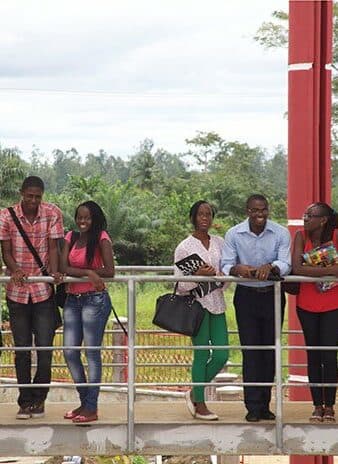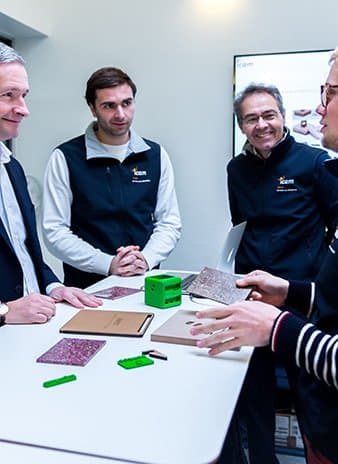This research aims to design materials and structures with innovative properties: shock resistance, solidity, elasticity, with always human and ecological interest in mind.
The “low-tech” dimension is also a preferred track with, for example, the development of composite materials based on renewable natural fibers as well as the recycling of wastes and plastics in order to cross ecology and remarkable technical properties, opening up new variations in the industry.
Publication highlights
Photocatalyzed Amidoarylation of 1,3-Butadiene
Gosset C., Moncomble A., Dumont C., Pellegrini S., Bousquet T., Sauthier M.,Pélinski L. (2020) Photocatalyzed Amidoarylation of 1,3-Butadiene. Advanced. Synthesis and Catalysis, DOI/. 10.1002/adsc.202000071
Thermo-mechanical characterization of unsaturated polyester/glass fiber composites for recycling
Nouigues, A., Le Gal La Salle E., Bailleul J.L. (2020) Thermo-mechanical characterization of unsaturated polyester/glass fiber composites for recycling. International Journal of Material Forming, doi.org/10.1007/s12289-020-01559-8
Plant Extraction and Physicochemical Characterizations of Untreated and Pretreated Diss Fiber
Nouri M., Griballah I., Tahlaiti M., Grondin F., Beaugrand J. (2019) Plant Extraction and Physicochemical Characterizations of Untreated and Pretreated Diss Fibers (Ampelodesmos mauritanicus), Journal of Natural Fibers, DOI.org/10.1080/15440478.2019.1687062
Modeling of EM Wave Coherent Scattering from a Rough Multilayered Medium with the Scalar Kirchhoff Approximation for GPR Applications
Pinel N., Le Bastard C. , Bourlier C. (2020) Modeling of EM Wave Coherent Scattering from a Rough Multilayered Medium with the Scalar Kirchhoff Approximation for GPR Applications. IEEE Transactions on Geoscience and Remote Sensing, 58 (3).
On the applicability of Taylor’s theory to the underwater blast response of composite plates
Sone Oo Y.P., Le Sourne H., Dorival O. (2020) On the applicability of Taylor’s theory to the underwater blast response of composite plates. International Journal of Impact Engineering, 145 – doi.org/10.1016/j.ijimpeng.2020.10367












